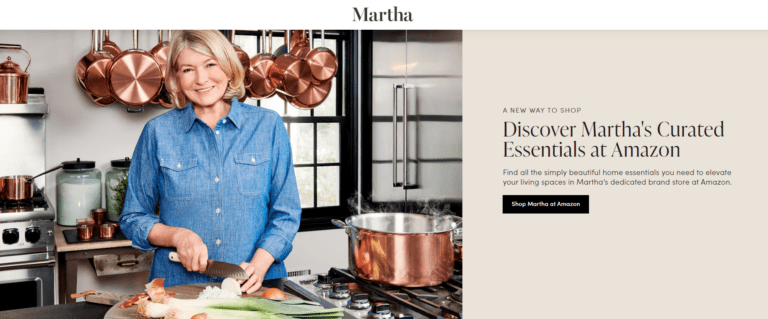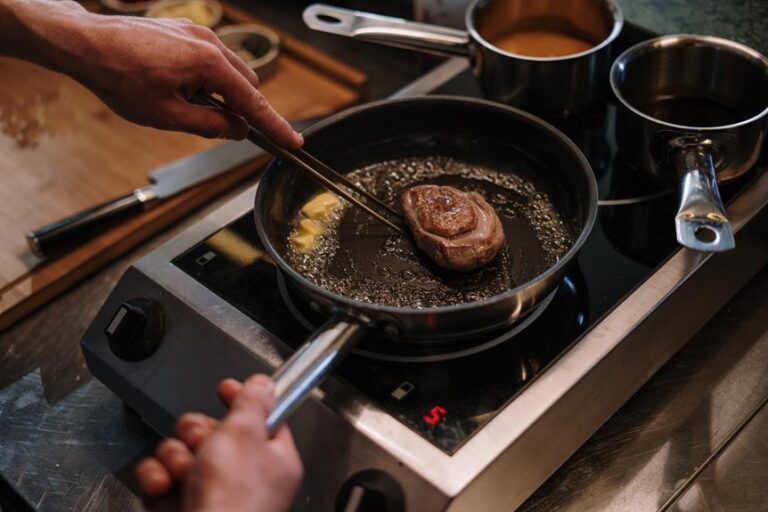I’ve always been a fan of cast iron pans, but recently I’ve been wondering about the best texture for them. Should cast iron pans be smooth or rough?
In this article, I’ll explore the benefits of smooth cast iron pans and debunk the myth that rough pans cook better. We’ll also delve into the seasoning process and provide tips for maintaining smoothness.
So, if you’re torn between smooth and rough, stay tuned to discover which cast iron pan is right for you.
Key Takeaways
- Smooth cast iron pans provide excellent heat distribution for even cooking.
- Seasoning creates a protective layer on the pan’s surface, preventing food from sticking and protecting against rust.
- Rough cast iron pans help create better sear marks on meats and allow for better heat distribution throughout the pan.
- Cleaning cast iron pans should be done without soap, using hot water and a stiff brush or sponge, and re-seasoning should be done when the seasoning wears off.
The Benefits of Smooth Cast Iron Pans
There’s a lot to love about smooth cast iron pans. For starters, they provide excellent heat distribution, ensuring that your food cooks evenly.
I’ve had the pleasure of using a smooth cast iron pan for years now, and it has become an essential tool in my kitchen. The smooth surface also makes it easier to clean, as food particles are less likely to stick to the pan.
Additionally, smooth cast iron pans require less maintenance compared to their rough counterparts. With proper seasoning and care, they develop a beautiful non-stick surface over time.
Whether I’m searing a steak or making pancakes on the weekend, my smooth cast iron pan always delivers exceptional results. It’s truly a versatile and reliable kitchen companion.
Understanding the Seasoning Process for Cast Iron Pans
To properly understand the seasoning process for your cast iron pan, you’ll want to explore how it forms a protective layer.
Seasoning is crucial for maintaining and enhancing the performance of your cast iron pan. When you season a cast iron pan, you are essentially creating a natural non-stick surface that prevents food from sticking and protects the pan from rusting.
The process involves applying layers of oil or fat onto the pan’s surface and heating it to create a polymerized layer. This layer creates a barrier between the food and the metal, preventing direct contact and allowing for easy release of cooked food.
Additionally, this protective layer helps in retaining heat evenly throughout the cooking process, resulting in perfectly cooked meals every time.
Debunking the Myth: Do Rough Cast Iron Pans Cook Better
When cooking with a rough cast iron pan, you’ll notice that the texture doesn’t affect the overall quality of your meals. Contrary to popular belief, having a smooth surface on your cast iron pan does not necessarily make it better for cooking.
The rough texture of a cast iron pan actually has its advantages. It helps to create better sear marks on meats and allows for better heat distribution throughout the pan. The slight imperfections in the surface also help with food release, preventing sticking and making it easier to clean.
Maintaining Smoothness: Tips for Cleaning Cast Iron Pans
If you want to keep your cast iron pan in great condition, it’s important to follow a few simple tips for cleaning. Trust me, I’ve learned the hard way that neglecting proper cleaning can lead to rust and a loss of that smooth surface we all love.
Here are my top tips:
- Avoid soap: Soap can strip away the seasoning and make your pan more prone to rust. Instead, use hot water and a stiff brush or sponge.
- Dry thoroughly: After washing, always make sure your pan is completely dry before storing it. Moisture is the enemy of cast iron!
- Oil after each use: To maintain that smooth surface, apply a thin layer of oil (vegetable oil works well) after each use.
- Don’t forget about re-seasoning: Over time, the seasoning on your pan may wear off. When this happens, give it a fresh coat by applying a thin layer of oil and baking it in the oven at 350°F for an hour.
Smooth Vs. Rough: Which Cast Iron Pan Is Right for You
Choosing the right cast iron pan for your cooking needs can make a big difference in your overall experience. When it comes to deciding between a smooth or rough surface, there are pros and cons to consider. A smooth cast iron pan provides excellent heat distribution and is perfect for delicate foods like eggs and fish. On the other hand, a rough surface creates better browning and searing, making it ideal for steaks and burgers. To help you decide which type of cast iron pan is right for you, here’s a comparison table:
| Smooth Cast Iron Pan | Rough Cast Iron Pan | |
|---|---|---|
| Heat Distribution | Excellent | Good |
| Browning/ Searing | Moderate | Excellent |
| Cleaning | Easy | Requires More Effort |
| Price | Higher | Lower |
Consider your preferred cooking techniques and dishes before making a decision. Both types have their advantages, so choose what suits your style best. Happy cooking!
Enhancing Heat Distribution: Smooth Cast Iron Pans Explained
To maximize the evenness of your cooking, it’s important to understand how heat distribution works in a smooth cast iron pan. Here’s what you need to know:
- Uniform Heating: The smooth surface of a cast iron pan allows for consistent heating across the entire cooking surface. This means that your food will cook evenly, without any hot spots or cold spots.
- Efficient Heat Retention: Smooth cast iron pans have excellent heat retention properties. Once heated, they can maintain a steady temperature throughout the cooking process, ensuring that your food cooks thoroughly and evenly.
- Better Browning: The smooth surface of a cast iron pan promotes better browning of foods like steaks and vegetables. It creates a nice sear and caramelization, adding depth and flavor to your dishes.
- Easy to Clean: Smooth cast iron pans are easier to clean compared to their rough counterparts. Food particles are less likely to stick on the smooth surface, making cleanup a breeze.
Smooth and Shiny: The Aesthetics of Smooth Cast Iron Pans
The smooth surface of a cast iron pan creates an appealing shine that enhances the aesthetics of your kitchen. I personally love how the sleek and polished look of a smooth cast iron pan adds a touch of elegance to my cooking space. The shiny surface not only catches the eye but also gives off a clean and professional vibe. It’s almost like having a piece of art hanging in your kitchen!
Plus, the smoothness makes it easier to clean and maintain, ensuring that it remains looking pristine for years to come. Whether you have a modern or traditional kitchen, a smooth cast iron pan is sure to elevate its overall appearance and make it feel more inviting to cook in.
Conclusion
In conclusion, it is clear that smooth cast iron pans offer a superior cooking experience. The smooth surface allows for even heat distribution and easier cleaning, making them a great choice for any home cook. While rough cast iron pans may have their own advantages, such as better seasoning retention, the overall convenience and aesthetics of smooth pans make them the preferred option for many.
So next time you’re in the market for a cast iron pan, consider going smooth!




